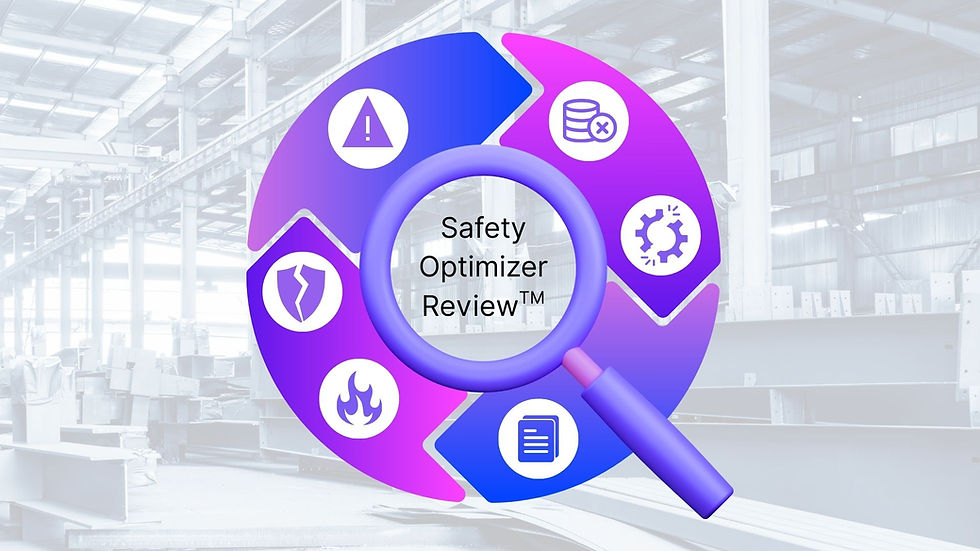The Reactive Safety Trap - Why traditional safety fails?
- Lucas Domingues
- May 12
- 3 min read
| By Lucas Domingues - Founder & CEO of Shied360
Over the past few weeks, I’ve had dozens of honest conversations with safety leaders across industries and countries — from construction to energy and logistics.
What I’m hearing is clear: Despite their best efforts, many feel like they’re stuck. Overwhelmed. Constantly reacting. Rarely moving forward.
And I’ve been there too. In my own experience leading safety teams across global operations, I saw the same patterns play out — firefighting mode, disconnected systems, admin overload, and frustration at the lack of progress.
That’s what I call the Reactive Safety Trap.

What Is the Reactive Safety Trap?
The Safety Reactive Trap is a cycle where safety teams are constantly responding to issues rather than preventing them.You feel like you’re always playing catch-up: chasing reports, closing actions, updating spreadsheets — while your risk profile quietly grows in the background.
At Shield360, we’ve identified six common pain points that keep safety teams stuck in reactive mode:
1. Data Fragmentation
Safety. data is spread across multiple systems, spreadsheets, inboxes, and paper forms. The result? Gaps in visibility, slow reporting, and missed opportunities to act before incidents occur.
2. Disconnected Processes and Tools
Your audits don’t talk to your incident reports. Your risk register isn’t linked to your audit records. The result? Safety becomes a patchwork — full of duplication, rework, and human error.
3. Administrative Burden
Safety professionals spend hours every week on manual data entry, compliance forms, chasing overdue actions.The result? Less time spent in the field or solving problems — and more time firefighting paper.
4. Firefighting Mode
You’re reacting to every inspection finding, client audit, or near miss — with no time to step back and think strategically. The result? Fatigue, burnout, and reactive thinking become the norm.
5. Compliance Cracks
Even with the best intentions, things fall through the cracks — overdue training, expired permits, missing documentation.The result? Audit failures, reputational damage, and increased legal exposure.
6. Poor Safety Culture and Performance
When safety feels like an admin task rather than a mission, people disengage.The result? Underreporting, corner-cutting, and performance plateaus.
How Technology Helps You Break the Cycle?
You can’t solve modern safety challenges with outdated tools, methods and mindset.
That’s where SafetyTech comes in. By strategically combining digital tools, automation, and AI, safety leaders can move from reactive to proactive and predictive safety management. But here's the catch: A first step is needed - that's what I call Safety Optimizer™ Review - carefully designed by Shield360 and soon to be available for safety professionals, helping them with a bespoke diagnostic of hidden issues - and how to tackle them.
Final Thoughts: Stop Firefighting. Start Leading.
The Safety Reactive Trap isn’t your fault — but staying in it is a choice.
More than ever, safety leaders are being asked to do more with less — and the only way forward is smarter, not harder.
By embracing the right tools and methods and focusing on what truly matters, you can break the reactive cycle, elevate safety culture, and drive real, measurable impact.
The future of safety isn’t just digital — it’s proactive, predictive, and people-focused.
And that future starts with you.
Stay safe, stay ahead.
Lucas




Comments